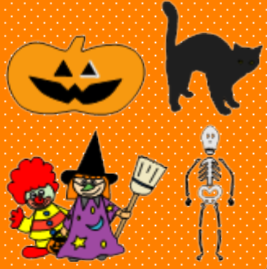In a recent webinar by Graham Fletcher, he discussed the enigma of fractions for a student. He had what I believed to be a great perception. Just like we teach kids to subitize whole numbers, we could dispel the notion that fractions are difficult by having kids learn to subitize fractions. And, just as we have students subitize whole numbers in many different ways--through dominoes, fingers, dice, tally marks...we should present fractions in many different ways in order for them to be able to better understand their meaning.
The SMART document that I made stems from Graham's idea, but I also made it with Number Talks in mind. I think these images could bring up some good math discussions and justifications of fractions. It is made with images that are easy enough for 1st grade, and some that would be relevant in a 5th grade class.
If you decide not to use the image as a number talk, you might print out a page of the SMART document and have it be a collaborative activity for kids to decide.
No matter how you use the pages in this doc, it would probably be good to print out the image so that students could cut the pieces apart so that they could prove their thinking to themselves and others by manipulating the pieces of the image.
 |
| Sample image from Fractions SMART doc. Click to download document. |





